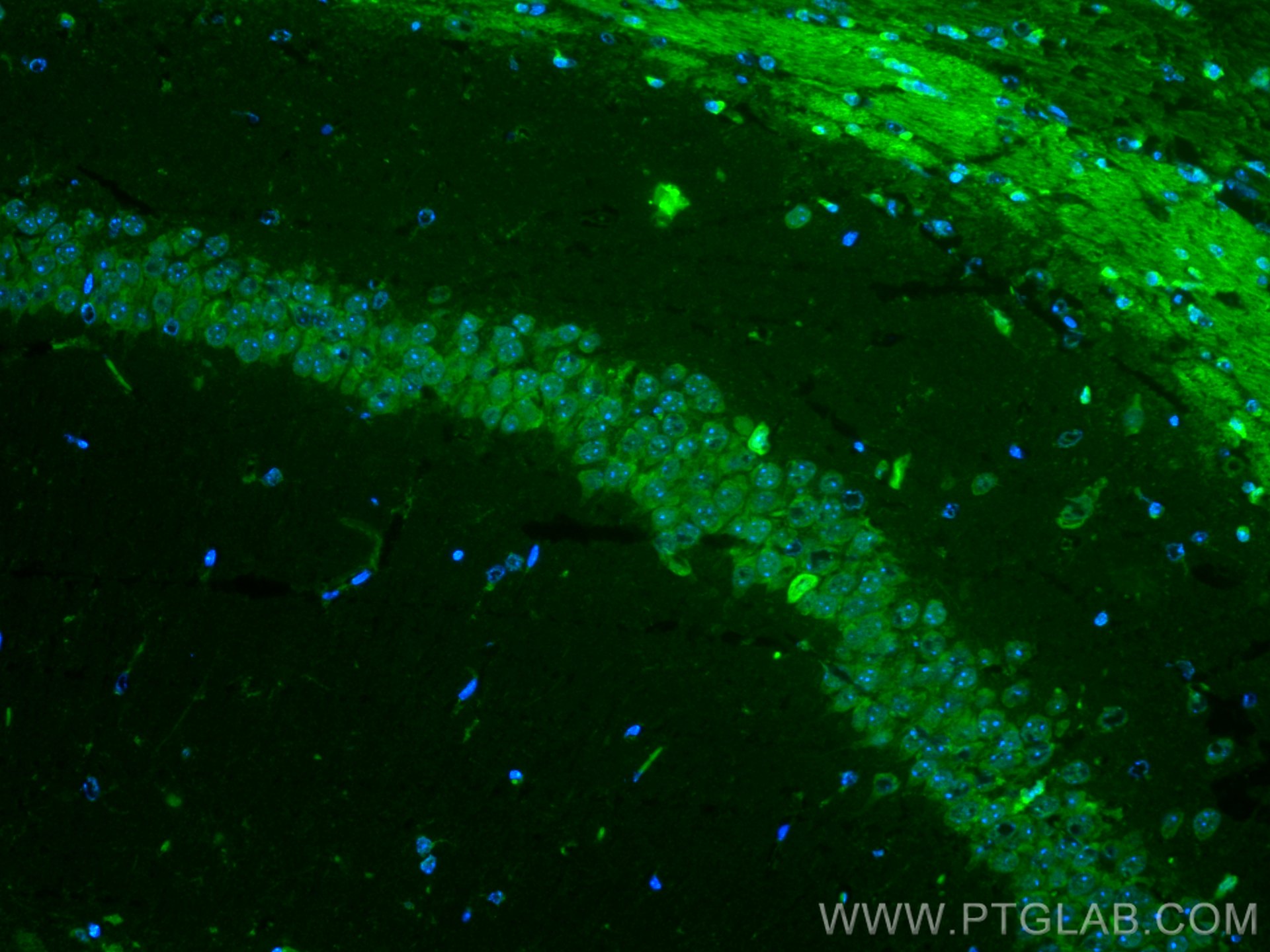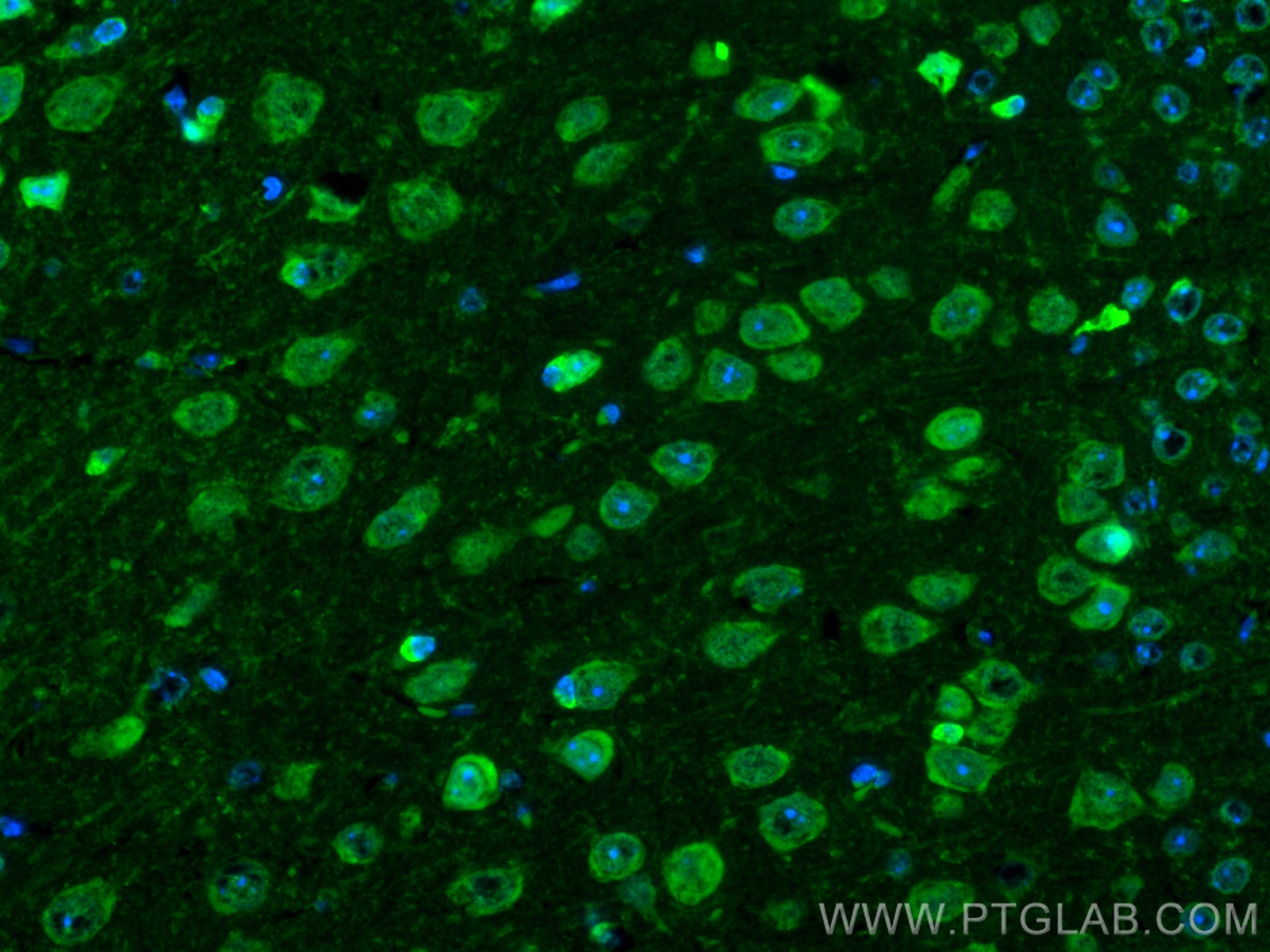Product Information
CL488-66513 targets OLIG2 in IF applications and shows reactivity with Human, mouse, rat samples.
| Tested Reactivity | Human, mouse, rat |
| Host / Isotype | Mouse / IgG2a |
| Class | Monoclonal |
| Type | Antibody |
| Immunogen |
CatNo: Ag18838 Product name: Recombinant human OLIG2 protein Source: e coli.-derived, PET28a Tag: 6*His Domain: 1-323 aa of BC047511 Sequence: MDSDASLVSSRPSSPEPDDLFLPARSKGSSGSAFTGGTVSSSTPSDCPPELSAELRGAMGSAGAHPGDKLGGSGFKSSSSSTSSSTSSAAASSTKKDKKQMTEPELQQLRLKINSRERKRMHDLNIAMDGLREVMPYAHGPSVRKLSKITTLLLARNYILMLTNSLEEMKRLVSEIYGGHHAGFHPSACGGLAHSAPLPAATAHPAAAAHAAHHPAVHHPILPPAAAAAAAAAAAAAVSSASLPGSGLPSVGSIRPPHGLLKSPSAAAAAPLGGGGGGSGASGGFQHWGGMPCPCSMCQVPPPHHHVSAMGAGSLPRLTSDAK Predict reactive species |
| Full Name | oligodendrocyte lineage transcription factor 2 |
| Calculated Molecular Weight | 32 kDa |
| Observed Molecular Weight | 35-39 kDa |
| GenBank Accession Number | BC047511 |
| Gene Symbol | OLIG2 |
| Gene ID (NCBI) | 10215 |
| Conjugate | CoraLite® Plus 488 Fluorescent Dye |
| Excitation/Emission Maxima Wavelengths | 493 nm / 522 nm |
| Form | Liquid |
| Purification Method | Protein A purification |
| UNIPROT ID | Q13516 |
| Storage Buffer | PBS with 50% glycerol, 0.05% Proclin300, 0.5% BSA, pH 7.3. |
| Storage Conditions | Store at -20°C. Avoid exposure to light. Stable for one year after shipment. Aliquoting is unnecessary for -20oC storage. |
Background Information
OLIG2, also named as BHLHB1, BHLHE19, PRKCBP2 and RACK17, is required for oligodendrocyte and motor neuron specification in the spinal cord, as well as for the development of somatic motor neurons in the hindbrain. Cooperates with OLIG1, OLIG2 establish the pMN domain of the embryonic neural tube. Antagonist of V2 interneuron and of NKX2-2-induced V3 interneuron development. OLIG2 is widely expressed in subsets of glia cells and progenitors, and it is strongly induced at different sites by both acute and chronic injury, albeit with different mechanisms. OLIG2 acts as a repressor of neurogenesis in cells reacting to brain injury. It may represent an effective approach towards evoking neuronal repair from parenchymal precursors.(PMID:19390819 )
Protocols
| Product Specific Protocols | |
|---|---|
| IF protocol for CL Plus 488 OLIG2 antibody CL488-66513 | Download protocol |
| Standard Protocols | |
|---|---|
| Click here to view our Standard Protocols |






